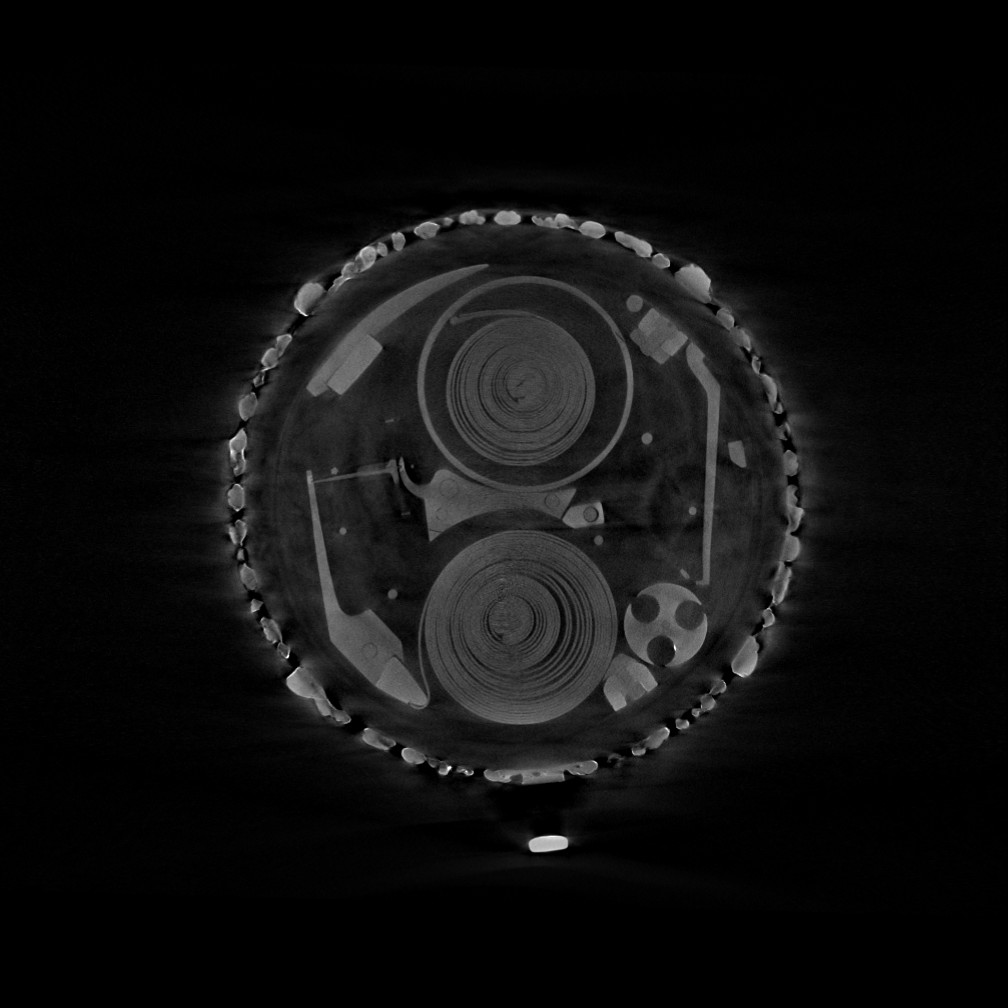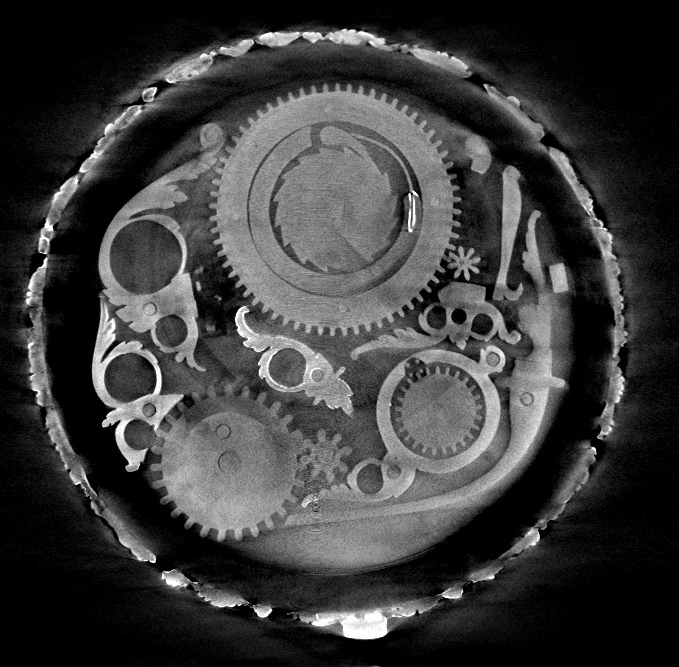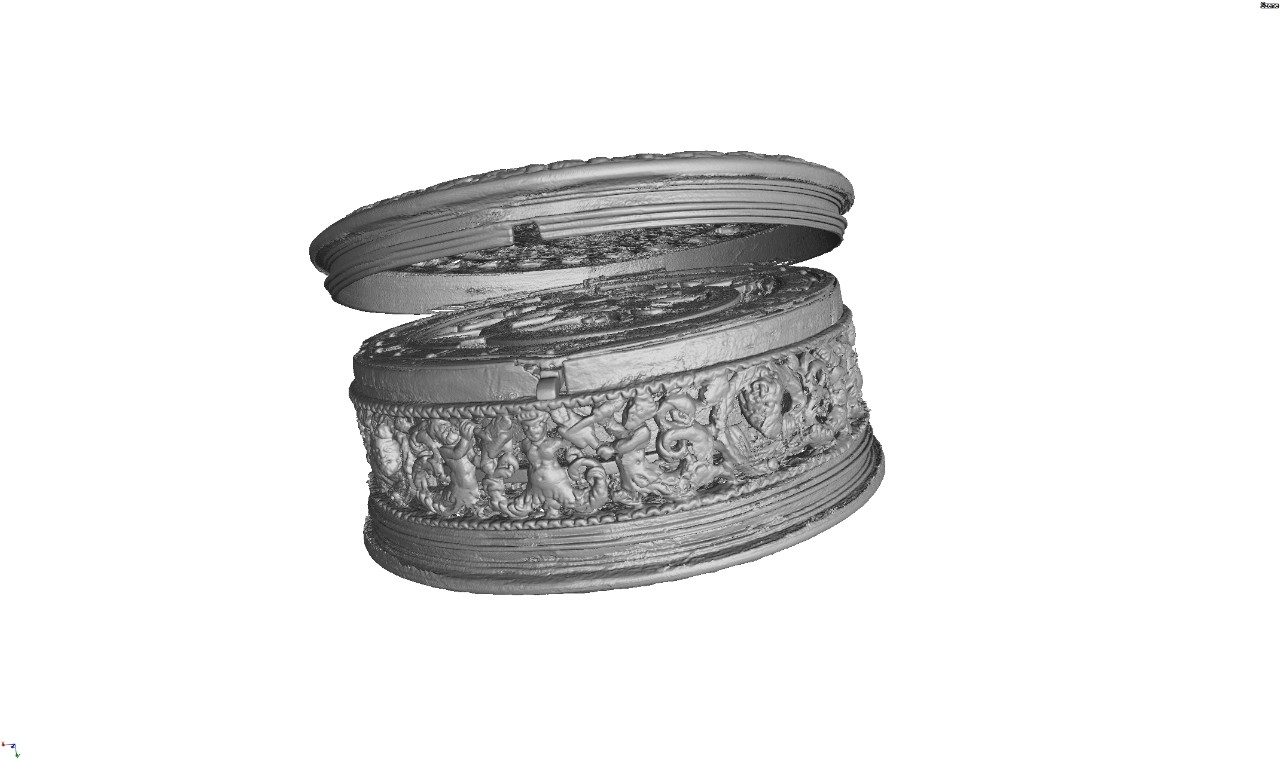Pendant watch with astrolabe

The visualization of individual layers allows the most accurate conclusions to be drawn about the internal components.
Early example of a pendant or pocket watch with a minute hand, which were not built until the 1550s.
Under the openwork cover of the clock is an astrolabe with a pointer, which, according to the inscription, indicates the true location of the sun. The investigation is intended to shed light on whether this promise actually holds true.

